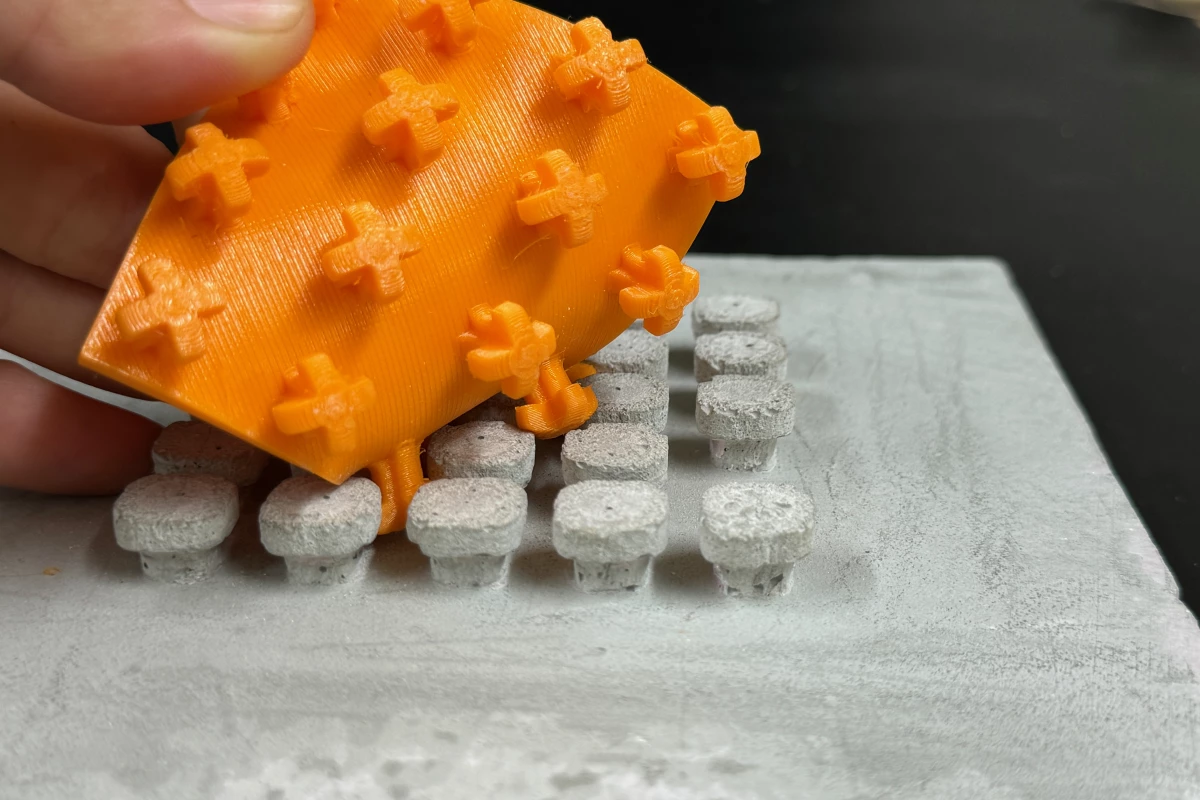Why tear down an entire building, if only its flimsy interior components need to be replaced? That's the thinking behind a new Velcro-like fastening system which allows interior walls to simply be yanked out by hand and swapped for new ones when necessary.
The technology is being developed by a team at Austria's Graz University of Technology (along with industry partners), as part of the ReCon sustainable construction project.
In a nutshell, the idea is that when a non-load-bearing interior element such as a wall, flooring panel or other item reaches the end of its lifespan, it simply gets pulled out and replaced with a fresh one. The building's main supporting structure, which is still good to go for a while, remains intact and undamaged.
When that main structure is initially being built, rows of small mushroom-head-shaped appendages are cast into the concrete (or milled into the wood, if it's a wood-frame building) at all the points where the interior walls will go. Those "mushroom heads" are the hooks in the Velcro-style hook-and-loop system.
Individual loop appendages – or alternatively, 3D-printed strips of them – are fastened to the top and bottom edges of plaster or wooden wall panels. Those panels are then simply pushed into place between the hooks, which their loops engage. Removing the panels is just a matter of pulling on them by hand at a certain angle.
The scientists are also investigating the use of RFID tags or QR codes on the panels (or other replaceable elements), a scan of which would tell people when that particular item is due for replacement.
"The central principle of ReCon is that buildings can be dismantled using clearly defined, separable interfaces," says the project leader, Dr. Matthias Lang-Raudaschl. "This means that in the event of renovation or new use, only those components that are worn or need to meet new requirements need to be replaced. This considerably extends the overall service life of a building, as a simple replacement of parts is sufficient instead of demolition."
Source: Graz University of Technology




